Response Type
Overview
Use Response profiles to manage profiling based on the responses received from the webserver.
You can manage Profiling based on the following parameters present in the responses received from the web server.
- Mime
- File
- Content-Length
- Response header pattern, etc.,
Enabling the Response Profiler section on the SafeSquid User Interface
Access SafeSquid interface
Go to configure page
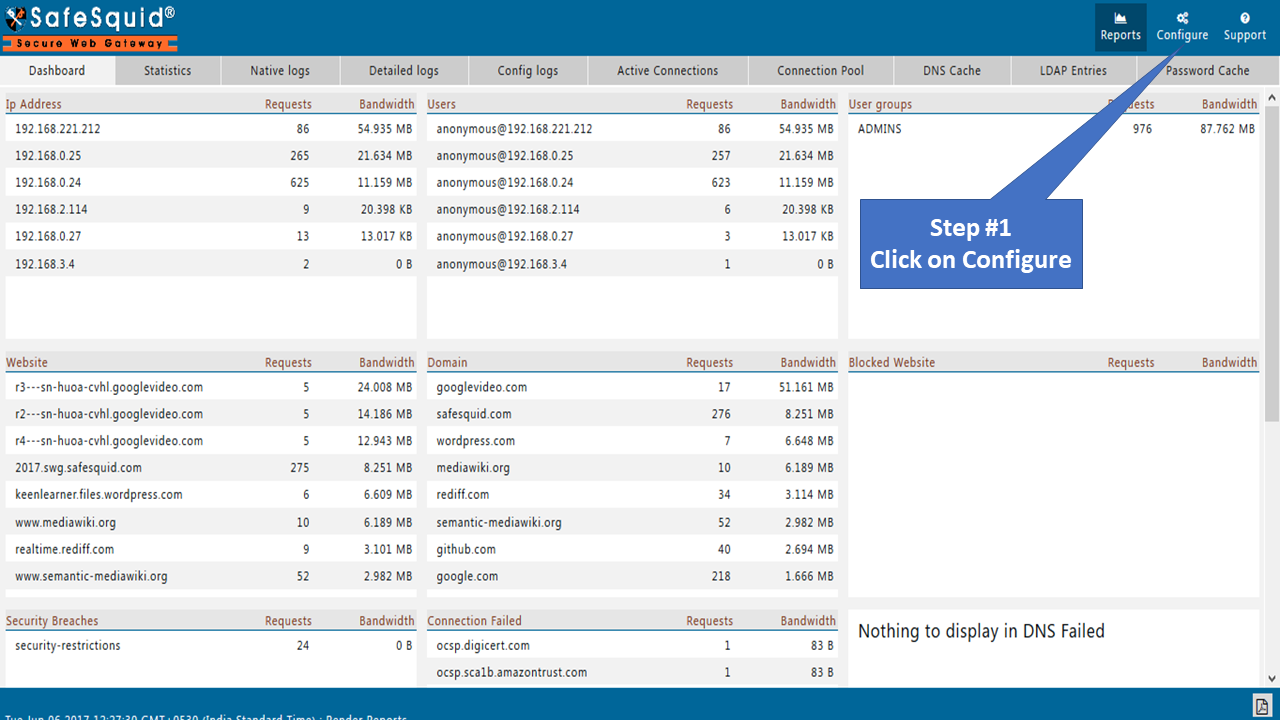
Go to custom settings.
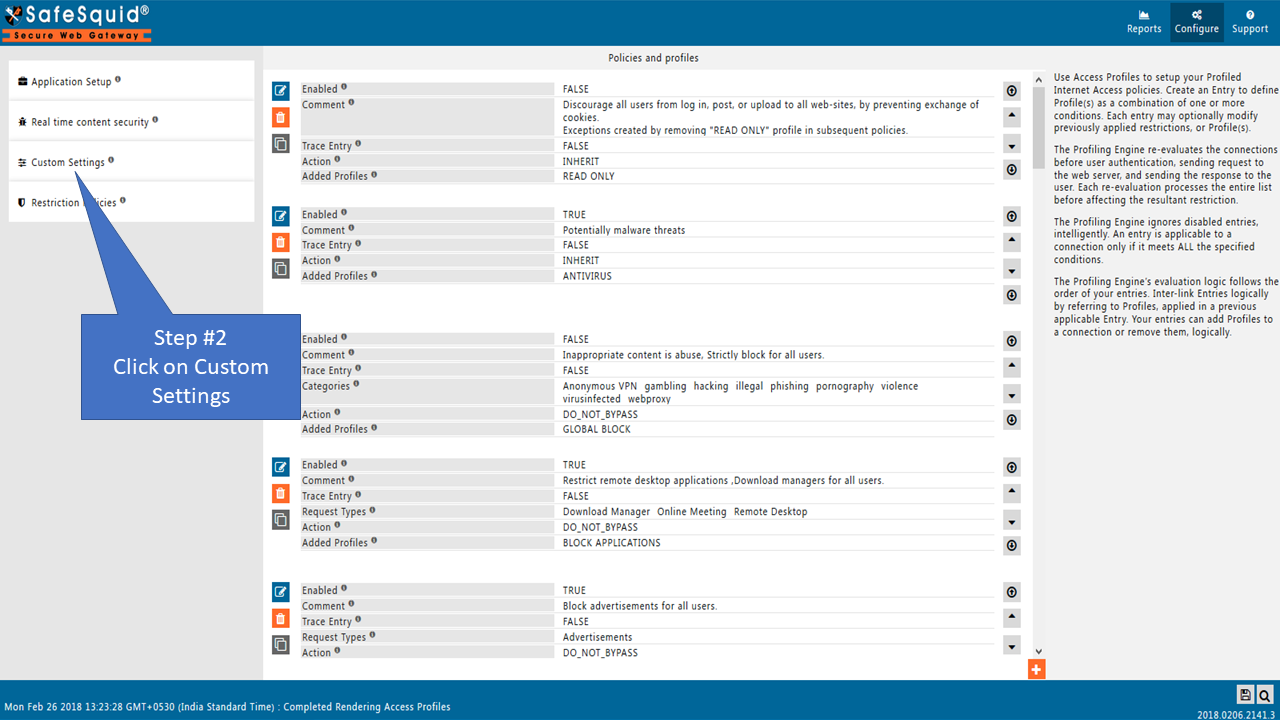

Global
Enabled
Enable or Disable the response types section.
TRUE: Enable response types section.
FALSE: Disable response types of section.
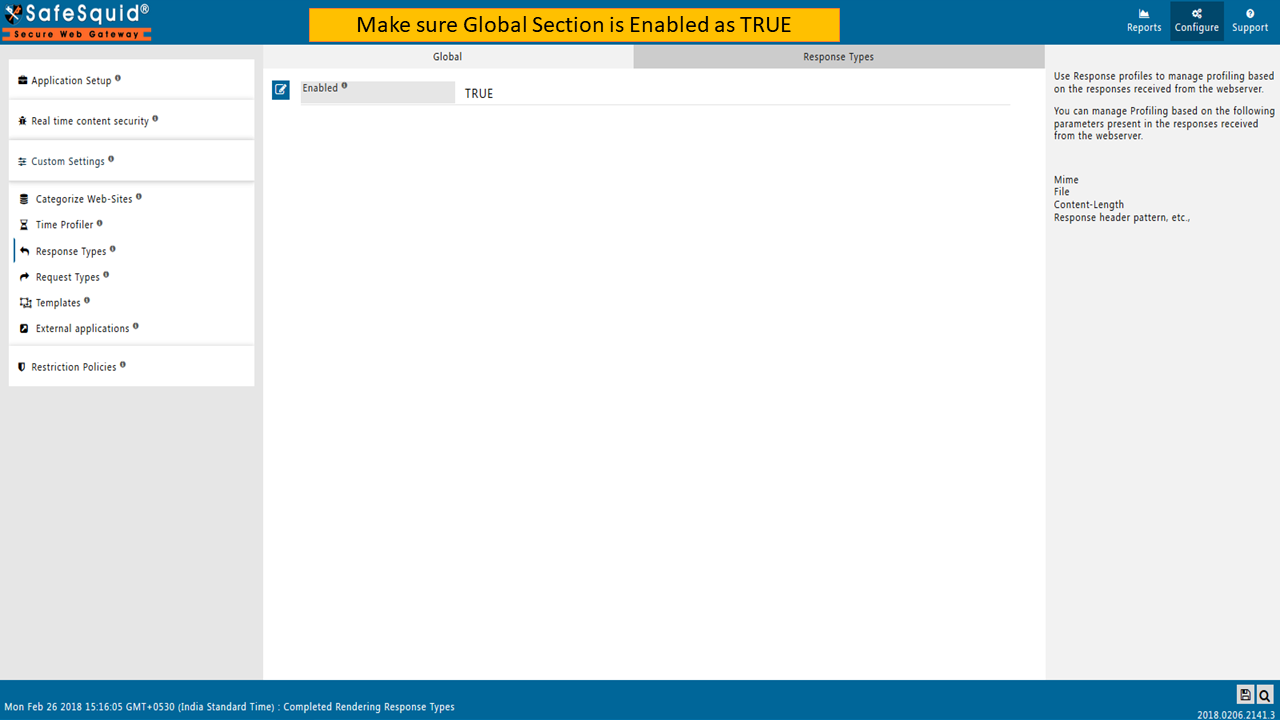
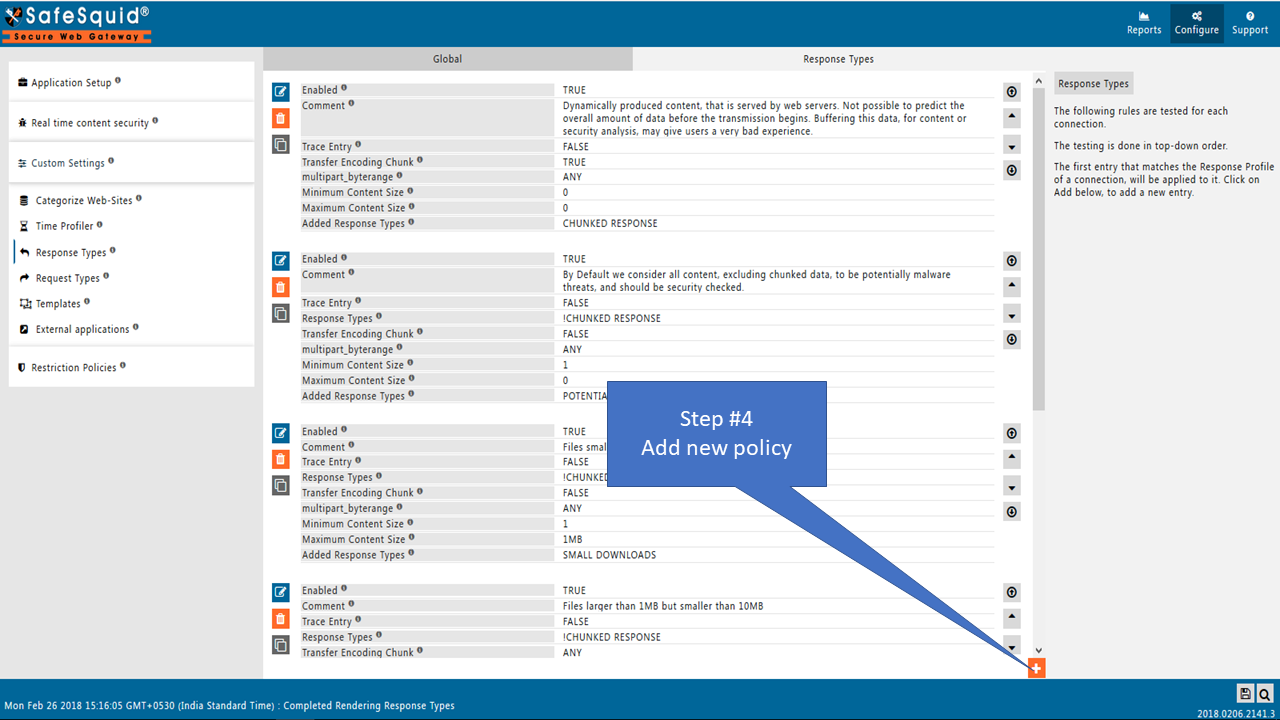
Response Types
The following rules are tested for each connection.
The testing is done in top-down order.
The first entry that matches the Response Profile of a connection, will be applied to it.
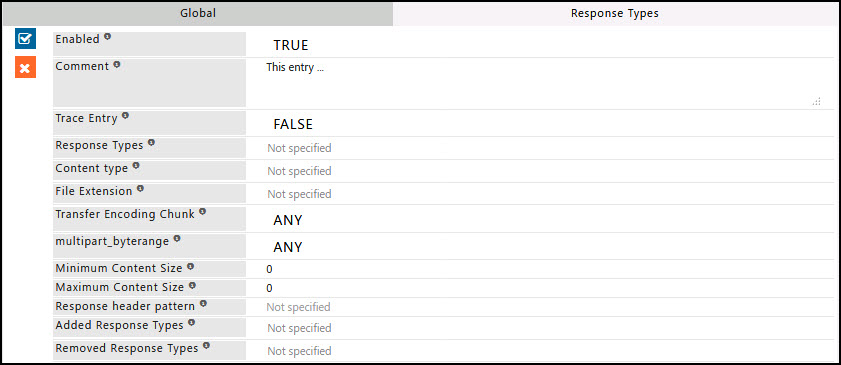
Enabled
Enable or Disable this entry.
- TRUE: Enable this entry.
- FALSE: Disable this entry.
Comment
For documentation and future references, explain the relevance of this entry with your policies.
Trace Entry
Enable or Disable Tracing of this entry
Select "Yes" to debug the application of entry using SafeSquid logs.
Enable entry tracing, is useful if you wish to validate, its application.
TRUE: Select this option to enable profile tracing.
FALSE: Select this option to disable profile tracing.
Response Types
Specify the list of Response Profile(s)for which this entry should be applicable.
Leave it Blank, to ignore this applicability test.
If one or more Response Profiles are specified, this entry will be applicable only after, a response has been received from the web server.
To avoid application to a connection for specific Response Profile(s), use negation (! Response Profile).
Content type
Specify the MIME type for which this entry should be applicable.
MIME-type is a way of identifying files on the Internet according to their nature and format.
Here, MIME-type indicates the response body received from the server.
This entry applies to the regular expression matching the MIME type.
Example: text/html, ^image/, ^application/, application/x-shockwave-flash.
If this entry should be applied to all responses, irrespective of MIME type, leave it blank.
File Extension
Specify the file extensions for which this entry should be applicable.
This entry applies to the regular expression matching the extension of the file(s) obtained in the response body.
Leave it blank to apply all the requests, irrespective of file extension.
Transfer Encoding Chunk
This option is to control how the transfer encoding chunk header should be handled.
Example: Transfer-Encoding: chunked
- ANY: Select this if the transfer encoding chunked does not matter in the response header.
- NO: Select this if you don't want to apply a profile if the transfer encoding chunked is present in the response header.
- YES: Select this if you want to apply a profile if the transfer encoding chunked is present in the response header.
multipart_byterange
This option is to control how the multi-part/ byte ranges header should be handled.
Example: Content-type: multipart/x-byteranges; boundary=THIS_STRING_SEPARATES --THIS_STRING_SEPARATES
Content-type: application/x-pdf Content-range: bytes 500-999/8000 ...the first range... --THIS_STRING_SEPARATES
Content-type: application/x-pdf Content-range: bytes 7000-7999/8000 ...the second range... --THIS_STRING_SEPARATES--
- ANY: Select this if multipart/ byterange does not matter in the response header.
- NO: Select this if you don't want to apply a profile if multipart/ byteranges are present in the response header.
- YES: Select this if you want to apply a profile if multipart/ byteranges are present in the response header.
Minimum Content Size
Specify the minimum content size of the response body for which this entry is applicable.
Maximum Content Size
Specify the maximum content size of the response body for which this entry is applicable.
Response Header Pattern
Specify the regular expression matching the response header pattern for which this entry is applicable.
If left blank, applies to all response patterns.
Added Response Types
Specify the list of Response Profiles, to append to the connection's existing Response Profiles, if all the applicability test rules match.
Subsequent applicable Entries may further modify the connection's Response Profiles.
Define a new Response Profile(s), or select previously defined Response Profile(s)from the drop-down menu to apply to the connection, if it matches this entry.
When defining a new Response Profile, use terms that uniquely represent your needs.
Removed Response Types
Specify the list of Response Profile(s), to remove the connection's existing Profiles, if all the applicability test rules match.
Subsequent applicable Entries may further modify the connection's Response Profiles.
Select previously defined Response Profile(s)from the drop-down menu to apply to the connection, if it matches this entry.
Example
Rule#1
All files with content type macro enabled office documents to be added to a profile "ALL MACRO ENABLED DOCUMENT".
Using this response type, we can block downloads to files that are macro-enabled documents.
Response type is used to profile connections based on the response received from the web server.

Rule#2
We want to block downloads of all E-book files and Match all files that are of file extension. azw & .epub Matching file will be added to the response type of "EBOOK's" Using the response type, we can then create policies in Access policies which will block all files with file extension .azw & .epub.

Rule#3
For connections with response header Upgrade: websocket, add the response type as WebSocket All websocket connections will now be profiled as "Websocket".
